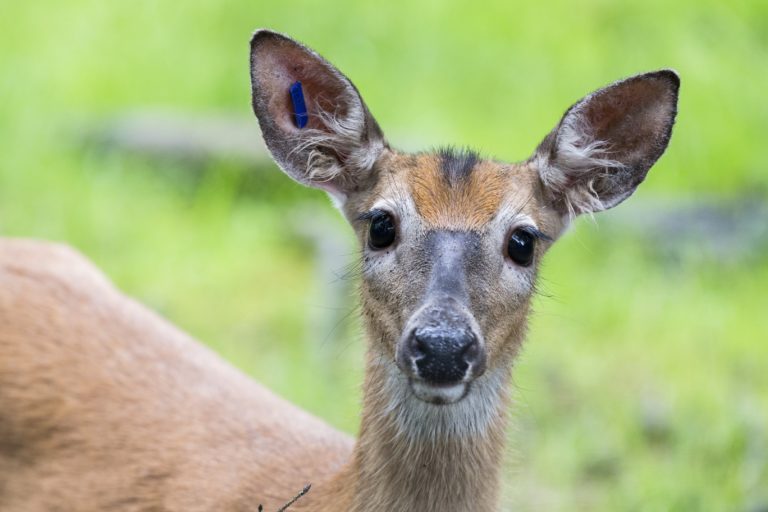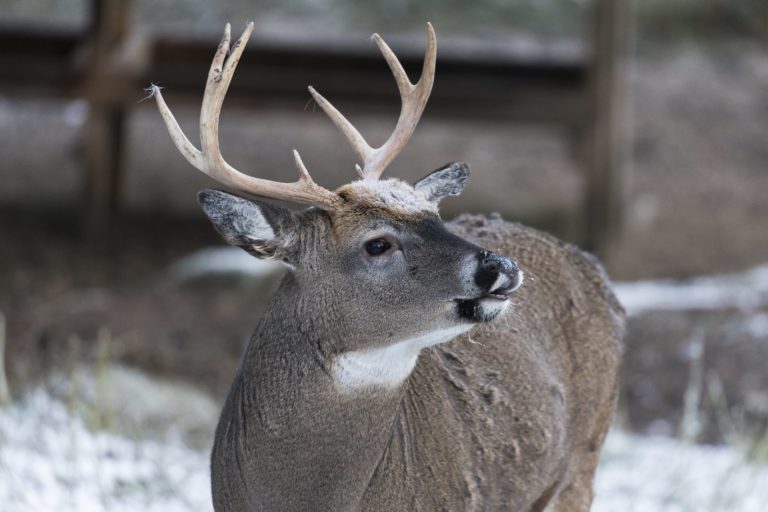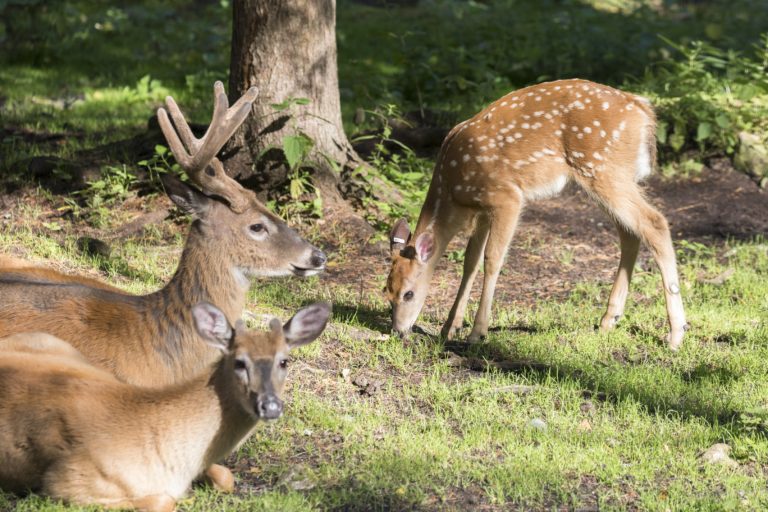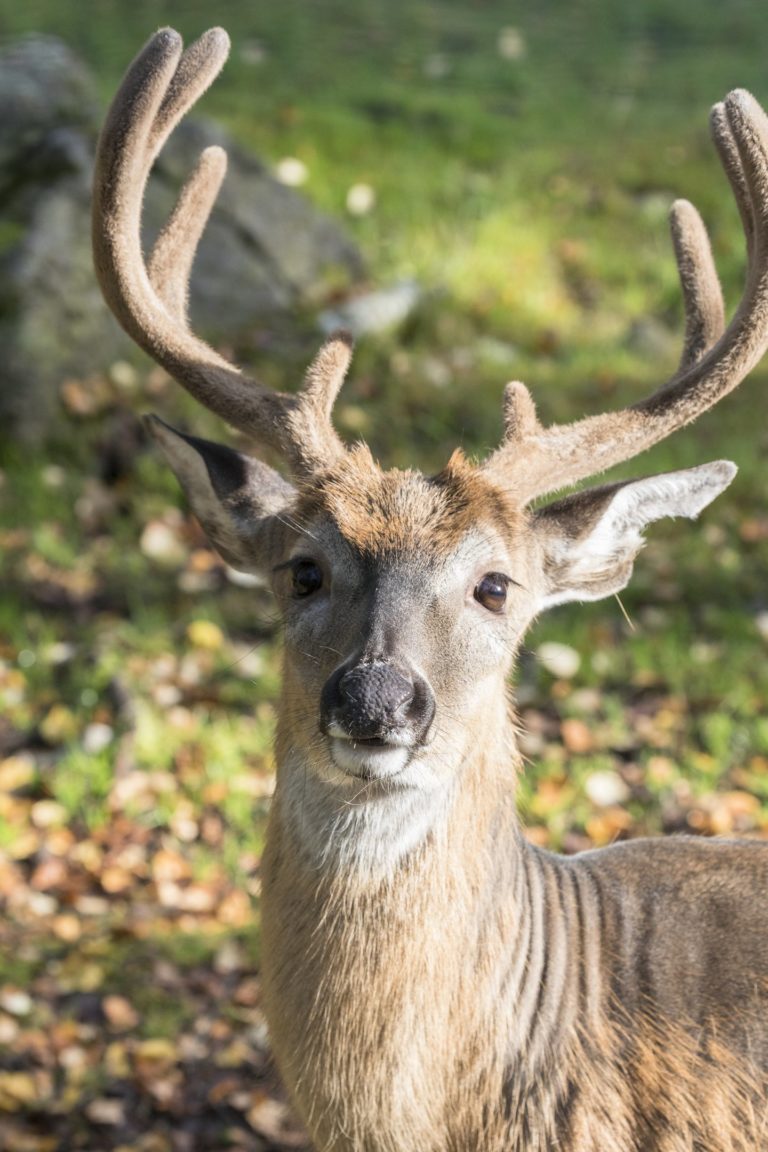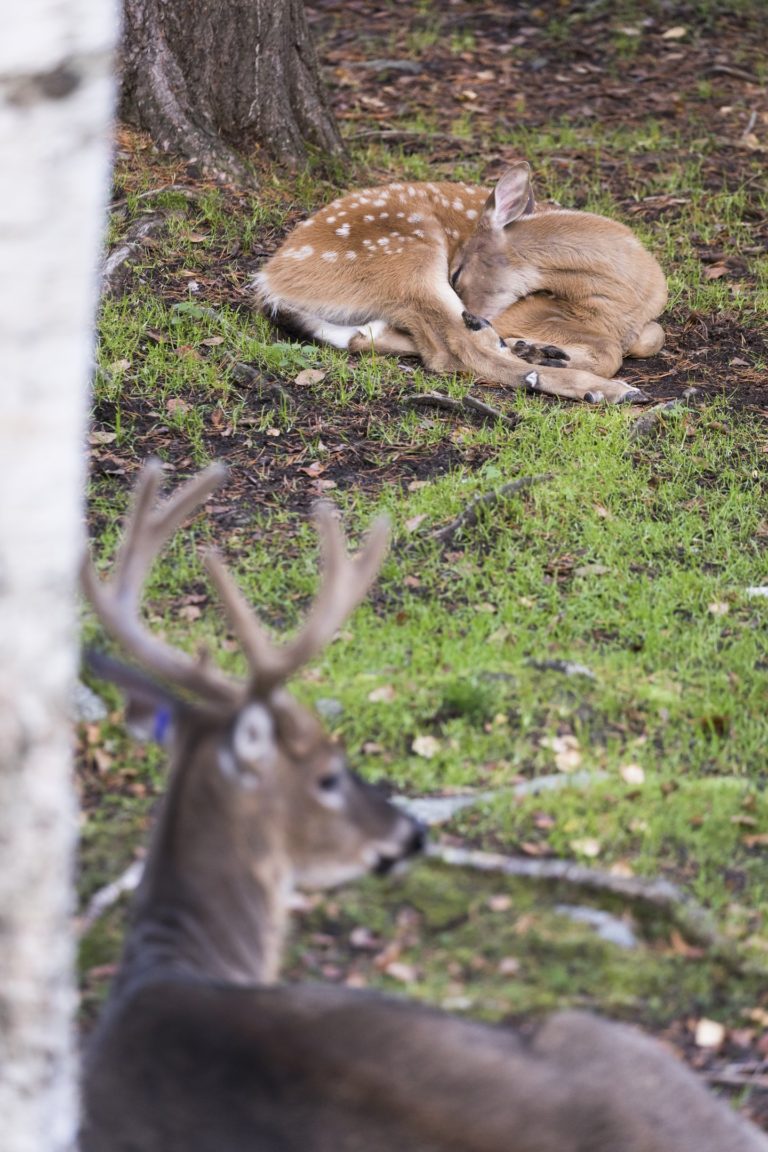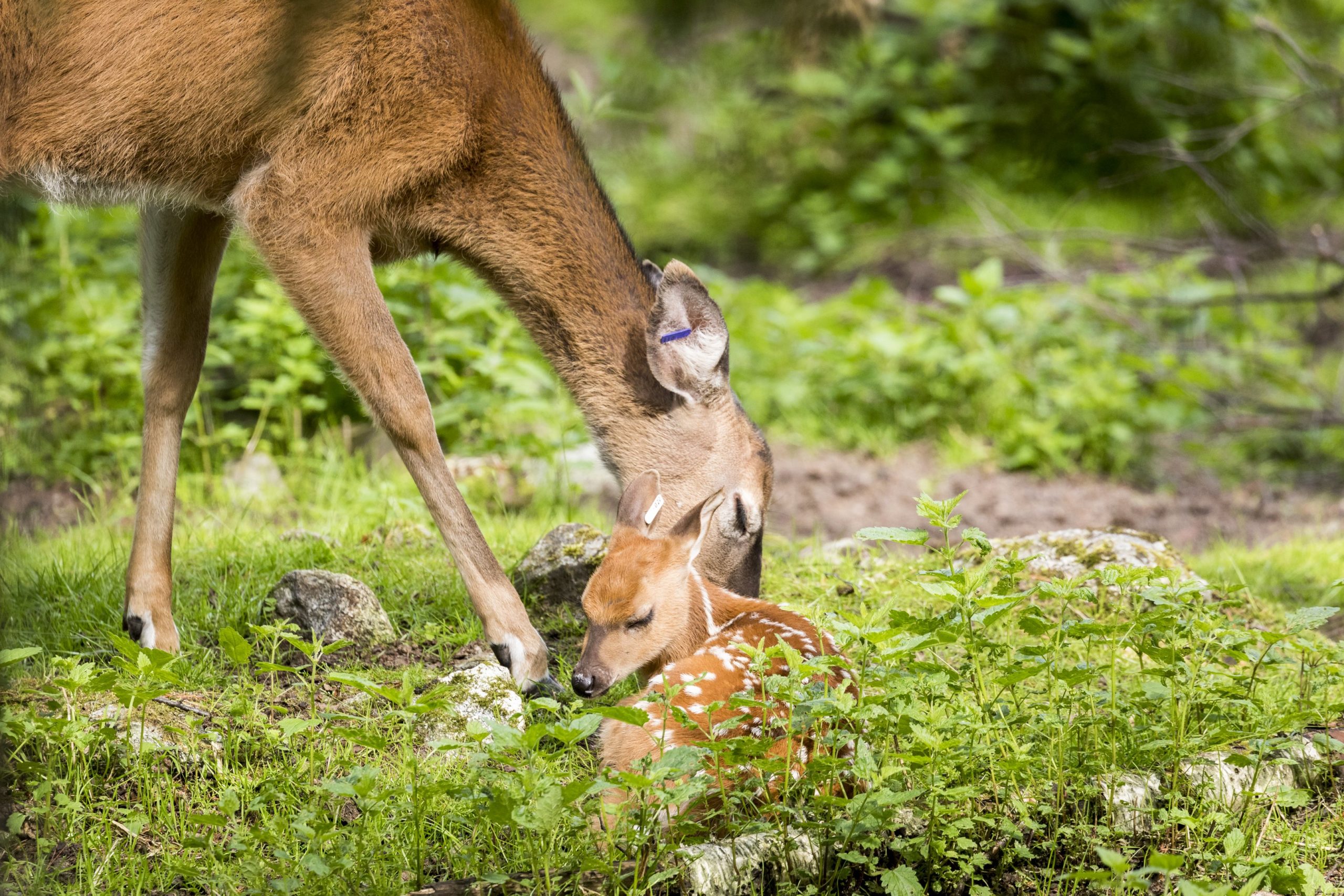
White-tailed deer
LIVING HABITS
The white-tailed deer is a common deer species on mainland America. From there they have been introduced to other parts of the world. The first white-tailed deer was introduced to Finland in the 1930’s. Today, the estimated amount of the white-tailed deer population in Finland is about 30 000, and they breed mostly in the southern and south-western parts of Finland. The white-tailed deer prefers edges of forests and fields as their habitat, eating grass plants, sprouts, and leaves of bushes and trees. In the winter they feed on spruce and pine needles, blueberry shoots and other twigs and soft branches. The white-tailed deer dam and calves form herds in the winter, but the males, after the mating season, prefer solitary wandering.
PROTECTION
The white-tailed deer is a game animal. The annual quarry is 20 000-22 000 individuals.
ADAPTING TO WINTER
The white-tailed deer has adapted well to the arctic winter environment. At the end of the summer they increase their subcutaneous fat reserves. The white-tailed deer is known to fast even for two weeks during the harshest winter, moving as little as possible to save energy. In extreme snow conditions they may have a hard time surviving; 50cm deep snow is the limit for their survival: digging up shoots becomes ever more difficult with thick snow covering. The wintry game feeding, provided by kind humans in Finland, helps them to survive over the harshest winter times.
White-tailed deer
Odocoileus virgianus borealis
Class: Mammalia – Mammals
Order: Artiodactyla – Cloven-Hoofed Animals
Family: Cervidae – The Deer Family
Size: Weight: 70-130kg, stands at 90-105cm at the withers.
Breeding: Heat: October-November, gestation period: 6,5 months, offspring: 1-3 at a time. Independent in 1 year, females in good condition reach sexual maturity in 6 months, males mostly in 1,5 years.
Lifespan: 12 -14 years.

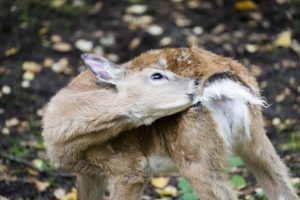
Did you know…
Did you know, that the name white-tailed deer derives from the white underside colouring on their tail? The deer will raise their tail to alarm other deer, helping the herd escape and stay together. The tail is a good traffic sign.





